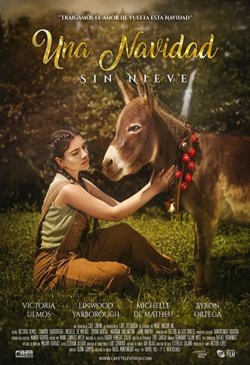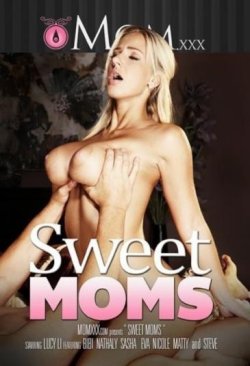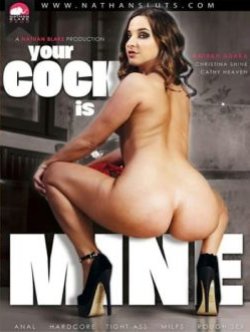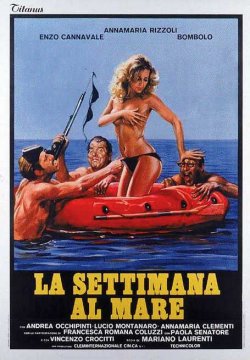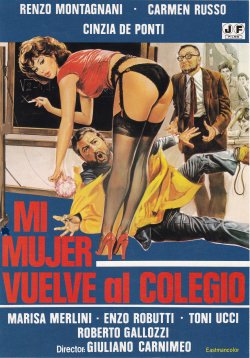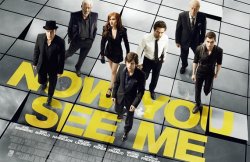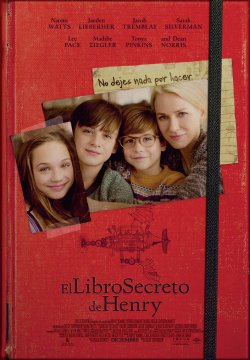 |
|
SINOPSIS
Una mujer soltera debe hacer frente a la crianza de sus dos hijos. Un buen día esta mujer descubre un libro escrito por uno de sus hijos y el cual contiene un plan para corregir un terrible mal. En el proceso descubrirá nuevas fuerzas como madre...
INTÉRPRETES
NAOMI WATTS, LEE PACE, JACOB TREMBLAY, SARAH SILVERMAN, MADDIE ZIEGLER, JAEDEN LIEBERHER, DEAN NORRIS, BOBBY MOYNIHAN, TONYA PINKINS, GERALDINE HUGHES, JACKSON NICOLL, FAITH LOGAN, LILY PETERSON
MÁS INFORMACIÓN DE INTERÉS
![]() CRITICA
CRITICA
![]() BANDA SONORA
BANDA SONORA
![]() CLIPS
CLIPS
![]() CÓMO SE HIZO
CÓMO SE HIZO
![]() VIDEO ENTREVISTAS
VIDEO ENTREVISTAS
![]() AUDIOS
AUDIOS
![]() PREMIERE
PREMIERE
 INFORMACIÓN EXCLUSIVA
INFORMACIÓN EXCLUSIVA
ABOUT THE PRODUCTION...
“This was a story I had not seen before, and I could not let go of it,” says director Colin Trevorrow. “It moved me, and it stuck with me. The scope of these characters’ journey was, to me, epic.”
For his first feature film as director since the 2015 blockbuster Jurassic World, Trevorrow brings to the screen an original screenplay by author Gregg Hurwitz, who first drafted The Book of Henry screenplay 19 years ago.
Hurwitz notes, “It’s lived within me the entire time. I actually grew up with this screenplay. It has all the energy of youth, and over the years in rewriting it I was able to bring to it the things I’ve learned. Once I had kids, I updated it with what I had learned being a parent.”
Producer Carla Hacken remarks, “One thing Gregg’s script does as part of going deep emotionally is to pull back the curtain on what exists in a lot of small towns, where everything seems perfect on the surface but is not necessarily so underneath. This was rich material for a movie.”
As Hurwitz was refining the script, it was read by producers Jenette Kahn and Adam Richman of Double Nickel Entertainment. Richman remembers, “I was in contact with Marc Glick, Gregg’s attorney, who I met while working at UTA. He recommended that we read this script – in part because Gregg had written for DC Comics and Jenette had worked for many years at DC Comics, so they shared storytelling initiatives and histories.
“The screenplay was an original in terms of its tone. The story explores dramatic subject matter: how far someone would go for a child, for a family member? The Book of Henry defies genre.”
Kahn adds, “As independent producers, you read probably 100 screenplays for every good one – but this one wasn’t merely good, it was remarkable. The story is very much about having a moral compass. I stayed up at night reading the script and I wrote to Adam at 2:00 in the morning saying, ‘We have got to get this made.’”
In seeking to line up production financing, Richman and Kahn were able to connect with Sidney Kimmel Entertainment (SKE). Shortly thereafter, in January 2012, an SKE executive returned from the Sundance Film Festival and urged Kahn and Richman to see the breakout hit Safety Not Guaranteed, directed by Colin Trevorrow. They did, and they sensed that he would be the right director for Hurwitz’s script.
Trevorrow realized that he could take an audience “to different places with Gregg’s script. It was a story about a mother and a family, but also a suspense thriller. I was moved by what it said about the vengeful anger that kicks in when a child is in danger, how that anger is dangerous in itself. It was a tonal tightrope to walk, and a risk I wanted to take as a filmmaker.”
Then, another project materialized; Steven Spielberg had also seen Safety Not Guaranteed, and was producing Jurassic World and thought Trevorrow should direct the movie.
It was another risk that Trevorrow wanted to take as a filmmaker and so he “promised the producers, ‘I will make The Book of Henry once Jurassic World is completed.’”
The project did not go dormant; upon joining SKE, Hacken immediately became aware that other directors were seeking to make The Book of Henry. She was hardly surprised, noting “it’s rare that a script emotionally grabs me every time I read it the way this one did, and then to be continually touched by the moments of real humor was unexpected. I was convinced the unpredictable nature of this story would appeal to audiences; it takes them on an emotional ride that is as exciting as it is moving.”
All concerned remained determined to get the movie made. Hacken reports, “Colin was in post-production on Jurassic World and we got the word that he was still intent on doing The Book of Henry. I thought, ‘That’s not likely to happen.”
Until it did; Trevorrow returned to the project with no letup in the enthusiasm that he had shown prior and readied to make the film. He worked with Hurwitz on new drafts of the screenplay.
The themes of the story became that much more clear as the writer and the director revisited the script. Trevorrow notes, “The Book of Henry addresses the exact moment when you become a parent. That might not be at the moment of your child’s birth; in this story, there is a shifting dynamic between parent and child that occurs. At first, the kid feels older than his mother. By the end, Naomi’s character has found her compass. I think it’s something all parents can relate to.”
Kahn comments, “Colin and Gregg were so in sync. Theirs was a unique collaboration that made Gregg’s script even better.”
“Colin’s passion literally drove the train,” marvels Hacken. “As producers, you have to look at people’s schedules, and when we did it seemed impossible this movie could be made in the time frame Colin had, but he willed it into existence.”
For Hurwitz, since the most recent revisions had infused more emotion into the story, a key concern was finding actors who would be able to embody the Carpenter family that he had imagined.
He reveals, “I had envisioned Naomi as Susan for a while now. She disappears into her roles; yes, she is a star, but you always feel like you’re seeing the character rather than the performer, and this role required a range that I knew she possessed.”
The two-time Academy Award nominee was drawn to the script straight away, identifying Susan as the kind of role “that is too few and far between these days. This character transforms throughout the movie, and not always in the best possible way, as the story takes turns. I wanted to honor her story because of the parents who go through such things in real life.
“Hopefully our movie will make people think about their own lives and stories and families.”Hacken remarks, “Naomi can convey so much with her face, and will give a director a lot to work with – a full range across different takes of a scene.”
Trevorrow confirms, “[Editor] Kevin Stitt and I had so much to work with from Naomi. She can identify exactly which point her character is at emotionally, and immediately go there. It sounds like an obvious thing that all actors can do. It isn’t.”
Finding the right young actors to portray the Carpenter brothers and Christina was a challenge for the production, as all three roles are pivotal. Trevorrow “saw an audition tape from Jacob Tremblay and really loved his instincts. We cast him before Room came out.
“I saw Jaeden Lieberher in St. Vincent, which had opened before Jurassic World was released, and had kept him in mind ever since.”
Hacken states, “These are astounding young actors, each a natural talent. I feel like we won the lottery with the boys, and then again with Maddie Ziegler, whose audition showed us her range.”
Hurwitz adds that “getting Maddie seen was Colin’s idea. He had taken notice of her in Sia’s music videos ‘Chandelier’ and ‘Elastic Heart.’ Given that I had written a character who expresses herself through dancing, the way that Maddie fits the role is nothing short of amazing; she has the dance experience in her own career, and she is all the more in touch with her emotions because of it.”
Trevorrow says, “Maddie’s character is in a horrible situation that would be difficult for any actor to play. She’s in a kind of domestic prison that ultimately she has to break herself out of. Ultimately, she does it through dance. I knew only Maddie could emote like that using movement.”
The filmmakers sought to create an environment for the actors that would realistically ground their characters in the story. There are relatively few locations in Hurwitz’s screenplay, reflecting the concentration on home and family for Susan and the children.
The director took that as part of his mandate “to tell this story in a straightforward way, honing in on single images to convey information. I wanted to make this movie using only the fundamentals. Too much style would be a disservice to a film like this – I didn’t want to get in the way. My job was to serve the story and the characters. Luckily we had the best crew in New York and we all understood our mission.”
The Carpenter house proved “the hardest thing to find” for production designer Kalina Ivanov. She notes, “A large portion of the story takes place there, and it is very much a character in the movie. My department’s opportunity was to make the history of the mother and her boys evident throughout the house.”
The creativity and slight unruliness of the Carpenter house needed to be contrasted with neighbor Glenn’s buttoned-up home. Trevorrow adds, “What happens between these two houses, in close proximity to each other, is where the story’s suspense elements come to the fore.”
The exteriors for both houses were ultimately located in the village of South Nyack, NY, adjacent to the Hudson River. The interiors of the house where Susan, Henry, and Peter live happily were created in a private residence in Yonkers, NY.
Ivanov’s team worked not only on redressing the Carpenter house’s interiors but on also the landscaping of the two homes’ exteriors, the better to reinforce the contrasts. She reveals, “Bringing Glenn’s garden and landscape to a level where there is no doubt how rigid and pedantic he is gave me the opportunity to use mums – which is my least favorite flower! So, for me, that was a way to make a point about his character.”
On the other hand, the artistry in the Carpenters’ home became a motif that permeated the rest of the movie. Ivanov offers, “I treated the script as a fable, so we could do some magical things while staying rooted in realism. There are lines being toed to tell this story, and ours was between very artistic and very everyday.”
Continuing the production’s use of upstate New York towns – and unifying the on-screen topography despite lacking actual proximity to each other – Henry’s tree house was built on location at a boy scout camp, Camp Henry Kaufman in Orangeburg, NY.
Ivanov’s unit’s creation of the tree house “started with a concept sketch that I presented to Colin about Henry’s mind and imagination, and then evolved. We wanted a more real-looking tree house, made completely from recycled things, within which creativity would flourish.
“I had to think, ‘What would Henry do here? What would he make use of?’ I had to get into character. It was a very unique experience, having a script like this which would allow me to do handmade and organic-to-the-character work.”
Hurwitz had written in a Rube Goldberg-esque machine that Henry and Peter work on in the tree house. While he had specified many elements, and Ivanov and Trevorrow were in close collaboration in the design phase, it was necessary to bring in engineer Brett Doar – respected as a contraption artist – to execute the formidable project.
Doar reveals, “Gregg Hurwitz had written in key features, for example that the machine ‘squirts a little bit of whipped cream into hot chocolate,’” Doar says. “But Colin, who is very much a collaborator, said I could feel free to innovate and go a bit wild. So it became a lot of fun. It was an ideal assignment for me: having some constraints as guidelines but also being able to improvise.
“I have to say, I also liked having elements that were really noisy and rattling away! My favorite was the ‘moo can,’ which everyone will remember from when they were kids: tilt it around and it goes ‘moo.’”
Ivanov adds, “Brett quantified for us just how much, and where, structural engineering needed to be involved. Everything ended up being intricately designed there, from the roof pieces to the walls that had to come apart so filming could take place inside the tree house.”
Crew members aged the newly built tree house, taking it from a gleaming new look to a more weathered appearance achieved with levels of glazes and solutions to make the freshly applied paint crack. Unseasonably cold weather “helped” as well – freezing the paint one night.
As director of Photography John Schwartzman, who was reteaming with Trevorrow following Jurassic World, notes, “There is a reality that you get from filming at a practical location that I feel was important for this picture. When people are moving through a forest at night, you get a certain energy because there is a lot of foreground.
“Whereas when we are in the house, as we are for much of the movie, it should look familiar, but not overly stylized – a heightened reality was what we would call it.”
Trevorrow opted to have The Book of Henry made on 35mm film, in part “for it to feel timeless. There is an emotional richness to the look that is achieved when you utilize film. It looks like our memories.”
Stitt, also reteamed with Trevorrow following Jurassic World, was up for the challenge as well, although Schwartzman admits, “Doing it on film does make for a more complicated workflow. But Kodak and a company named Alpha Labs have sponsored a mobile laboratory, and we were the first production to make use of that.
“I knew film could handle the dynamic range of darkness and brightness, which reflects the story itself. I do believe that film can see more than the best digital camera; digital cameras can see better in the dark, but they can’t reproduce skin tones and colors as well as film.”
Costume designer Melissa Toth was able to engage colors because, although Henry wears more serious clothing to reflect his level of responsibility and focus, he and his brother still don pajamas at bedtime.
Toth notes, “Henry dresses simply, but we put in touches which remind – to the story’s point – that he is still a kid; for instance, a T-shirt with a robot on it. But we very specifically chose when and where to use those pieces.
“Susan’s looks are reflective of her job as a small-town waitress and also her mindset, so she is often outfitted in comfortable oversized sweaters and jeans. The story’s other parent, Glenn, is more restrictive and wears clothing representative of his closed persona.”
With the characters having resonated for Trevorrow from his first reading of Hurwitz’s script, “he had some specific ideas for all the characters, and so did I,” reports Toth. “We had a great time collaborating. Typically I would come up with a mood board of ideas for each character, and Colin would edit out ones that he didn’t respond to while pointing up ones he liked. From there we would try out the ideas in the fitting room with the actors until we had what was needed for the story and the characters.”
One of the more difficult costume challenges was to scale back Maddie Ziegler’s natural effervescence into the haunted Christina. Toth comments, “For Christina, I was focused on projecting a person who basically wants to disappear. I also wanted to try to make Maddie look as young as possible; I did put lavender and pink into the palette, which makes her look less mature. In person, she looks her age, but her beauty is so arresting that I needed to tone it down just like Maddie was playing Christina’s quietude.”
The school that all three children attend in the film was put on-screen via two different education locations in White Plains, NY: the Rochambeau School and the Ridgeway Elementary School.
Additional New York state filming was done in Rockland Lake State Park; at the Croton Gorge Park and Croton Reservoir Dam, the first masonry dam in the U.S., in Croton-on-Hudson; at Mount Vernon City Hall; at the Long Island Jewish Medical Center; and at Grumman Studios, also on Long Island. Aside from the production’s engineered tree house interior, the only other completely new interior was a hospital room set.
Hurwitz describes the first day of filming as one of the most special moments in his life and career. He marvels, “I was looking at the monitor, at Naomi with Jaeden and Jacob – and I was seeing a family, exactly how I’d envisioned them in my head. After so many years, the vision was being realized and it was as if there was no distance from what had been on the inside of my brain to what I was seeing, even though I had been carrying them with me for half of my life.”
On the set, Kahn was struck by how Watts inhabited her character. The producer muses, “I don’t know if it’s because she’s a wonderful actor or because she is a mom herself, but to watch Naomi as Susan was to see all the emotions of a loving, devoted mother – humor, dedication, angst – embodied.”
Richman adds, “Naomi brings Susan alive in all her dimensions. You watch her with these two boys, and you want her to be your mom because she’s just so loving and so much fun.”
Hurwitz sensed “warmth whenever these three actors were together. They had a chemistry that was positively familial.”
Watts, in real life the mother of two boys, had previously made films with both Lieberher and Tremblay. But the actress clarifies that “the casting decisions were Colin’s, so for me it was a happy coincidence. Having this familiarity with them already, from our previous movies, was great; there was an existing shorthand that was so helpful.”
Trevorrow reports, “Naomi gave Jaeden and Jacob a lot of trust, believing that they would understand their characters. There was so much respect there that it felt like three professionals convening, not an adult and two child actors.”
Boys they may be, but Lieberher and Tremblay are also accomplished young actors who have each made several movies already.
Lieberher’s take on Henry is that “he’s very strong and smart. He believes that the worst thing in the world is just looking away and not helping people.”
Richman notes, “The pitfall in playing this character was having Henry come off as an obnoxious know-it-all. With Jaeden’s sensitive, thoughtful study he found all the subtleties in Henry and brought out the character’s best qualities.”
Of Tremblay, Watts remarks, “I see a level of commitment and professionalism in Jacob to go with his natural qualities, but what truly surprises me is when a kid can sustain concentration like he does – particularly at such a young age!”
The young(er) actor notes, “Naomi helped me play the sad parts, and for this one scene me and my own mom picked out some music I could listen to that helped me get into character, and I pictured someone’s face instead as my mom’s; that made me cry.
“Peter’s a normal boy, like me. I hadn’t played a normal boy in a while; it was nice to play someone like me again.”
One of Tremblay’s favorite scenes in the movie entails Peter “making magic – he gets snow to happen inside, a huge blizzard. There’s no abominable snowman, though.”
Lieberher says that Tremblay “became like my little brother. We would play on the set.”
Tremblay reveals, “Jaeden and I would do this special handshake: we start to high-five each other, then ‘miss’ and instead comb our hair.
“He and Maddie and I played together a lot; we would race each other for lunch. I’ve been in lots of movies where there weren’t kids on the set, so to have other kids around was really fun.”
Lieberher adds, “Maddie is so sweet, and she is awesome to work with; I think she can keep going with acting.”
Ziegler confides, “I had been taking acting lessons for two years before making The Book of Henry. Every day I learned so much from Colin and the other actors – especially watching Naomi, because she is so experienced.”
The young actress was thrilled to have a dance performance scene included for her character. “It’s modern dance, and so beautiful,” she says. Ziegler and Trevorrow worked extensively with choreographer Kyle Abraham, a MacArthur Genius Award winner, on the dance performance.
Ziegler elaborates, “Christina starts it off being very shy, but halfway through the performance she just begins to let go: she is telling her story and she’s hurting in pain and it is also hurting her to let go, but she is expressing herself.”
Abraham feels that Ziegler “takes ownership of the piece in a powerful way, as a dancer, performer, and artist. Maddie is keen on getting everything correct, and not just in precision terms. She connects to the dance’s vulnerability, and also its passion and fire.”
Also playing to her strengths, Sarah Silverman, an actress now known as much for her dramatic work as her stand-up comedy, mined both to play Susan’s coworker Sheila. “I try to get at the part honestly. This is a story with a lot of sadness,” she notes. “But I still get to do fun stuff.
“Naomi plays all these conflicting things and makes it look effortless. And, those two boys? They are brilliant, stunning. They enhanced the experience for all of us.”
Watts says, “I definitely consider Colin to be a real actor’s director. He has clarity of vision, and so many ideas, yet he makes an actor feel safe enough to try anything and everything.”
In The Book of Henry, Watts does something audiences haven’t seen – or, for that matter, heard – her do before; she sings. Created especially for the film, “Your Hand I Will Never Let It Go” began with Trevorrow’s desire “for a lullaby that I could integrate into this family’s nightly rhythm – sung first by Naomi’s character and then again at the end by an iconic voice.
“Ryan Miller wrote the song in Safety Not Guaranteed that Mark Duplass sang to Aubrey Plaza around the campfire, and I asked him to do this new one as well. Then I asked, ‘Who is your all-time favorite female voice in the history of music?’ Right away, he said, ‘Stevie Nicks, no question.’”
The production reached out to the rock legend, who committed to record it in a Los Angeles studio in an expanded version by Miller and Thomas Bartlett. Trevorrow reflects, “It was a privilege being there. Stevie performed our song so beautifully and hauntingly.”
“The Book of Henry was truly a labor of love for so many people,” says Hacken. “It was for me immediately when I joined SKE. It was for Gregg, for nearly two decades. It was for Jenette and Adam from the moment they read it, and it was for Colin, whose connection to the material strengthened all of ours.
“It’s hard to tell human-scaled stories on the big screen now, but I think we have a responsibility to the audience to tell them.”
Trevorrow states, “This piece is a true original, and yet it feels like it’s existed for centuries. This is a time when we’re convinced that we’re hopelessly divided, that nothing is shared. But this film has a set of values that I think we do all share, like the best stories. I hope it sticks with audiences the way it stuck with me.”
Lieberher adds, “When people watch The Book of Henry, I hope they see that you shouldn’t ‘walk away.’ You should always help.”
 GALERÍA DE FOTOS
GALERÍA DE FOTOS
https://www.cineymax.es/estrenos/fichas/119-t/101942-the-book-of-henry-el-libro-secreto-de-henry-2017#sigProId1cf8433421






